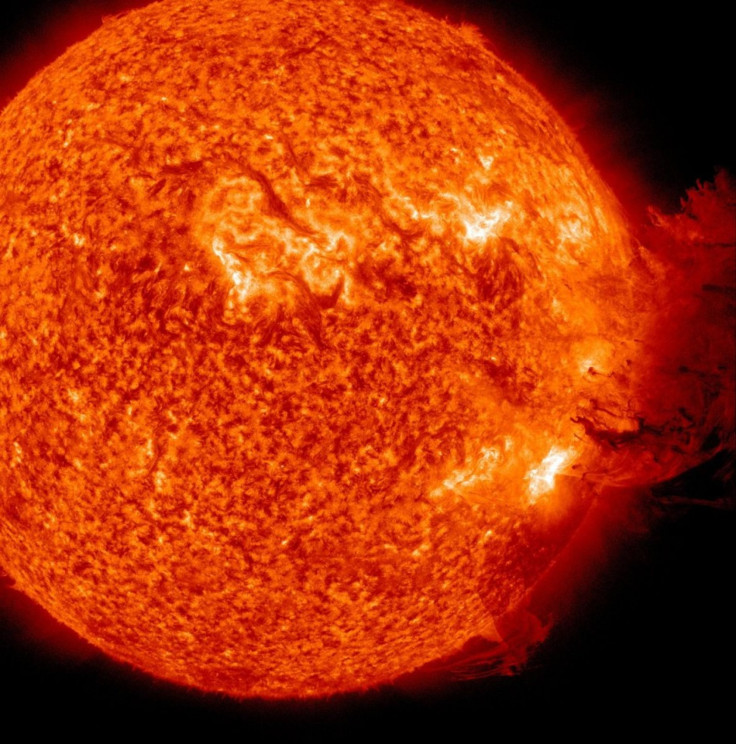Geomagnetic Storm Likely as Significant Solar Flare Headed to Earth

A series of solar flares that erupted in the Sun over the last three days are heading toward Earth and could disrupt power grids and satellites.
The flares, which are backed by a small radiation storm and a spectacular coronal mass ejection (CME), might stimulate aurorae on Friday.
The sun has unleashed at least three hearty solar burps since Tuesday which are currently en route to Earth. The third blast occurred at 4:57 a.m. GMT on Thursday from sunspot 1261 and was classified a significant M-class solar flare.
The third and fastest CME, moving at nearly 2,000 kilometers per second, may catch up with the first two en route. The combined cloud is predicted to hit Earth on Aug. 5 at 13:55 UTC, plus or minus seven hours, according to SpaceWeather.com.
The solar flares caused some radio blackouts Wednesday and Thursday, and caused some disruptions of high-frequency communications with airplanes flying over the Atlantic and Pacific oceans.
The National Weather Service (NWS) expects the flare to cause G2 (Moderate) to G3 (Strong) Geomagnetic Storms on Aug. 5 and potentially elevated protons to the S2 (Moderate) Solar Radiation Storm condition.
High-latitude sky watchers should be alert for Aurorae or Aurora Borealis, also known as Northern lights, which are created as a result of some natural mechanism between solar wind, ions flow, Earth's magnetic field and collisions between ions and atmospheric atoms and molecules that cause energy releases in the form of colorful lights.
Visible auroral activities are predicted for Friday in high latitude regions of the Northern Hemisphere, including the Arctic and parts of Canada, Russia, Alaska (USA) and northern Scandinavia.
A solar flare is caused when intense burst of radiation comes from the release of magnetic energy associated with sunspots. Flares are the solar system's largest explosive events. A CME happens when the outer solar magnetic fields are closed, often above sunspot groups, and the confined solar atmosphere can suddenly and violently release bubbles of gas and magnetic fields.
While a strong solar flare increases the chance of a spectacular light show, the electromagnetic pulse can also disrupt satellite communications, power grids and radio traffic when it passes the Earth. Some industries that are usually affected by solar flares include electrical power grid companies, airlines, GPS, military and ocean shipping routes.
The strongest solar storm on record is called the “Carrington Event,” which is named after Richard Carrington, who viewed and reported on the solar flare of Sept. 1. It occurred in late August and early September, 1859. From Aug. 28 through Sept. 4, aurorae of unusual brilliance were observed throughout the globe.
© Copyright IBTimes 2024. All rights reserved.











